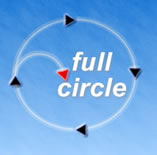
Full Circle > Getting Started >
Searching vs Browsing

"I am trying to get my head around the topic of browsing."
Jan, a Media Specialist from Wisconsin, recently asked:
"In your article, Five things today's digital generation cannot do (and what you can do to help) – Do you (only) Google? (Pt. 2 of a 5 part series), you mention that "The only time you ever search the live Internet is when you browse."
Can you give me a good description/definition of the relationship/difference between searching and browsing? Or maybe where it appears on a searching continuum? Do you have a flowchart available that reflects the relationship?
Thanks, Jan, for your question.
The following table & flowchart point out the main differences between searching and browsing:
Searching |
Browsing |
When searching you are exploring an indexed database webpage copies created by the search host. A search engine like Google is constantly making copies of websites and saving those copies in their own computers. They've worked out a very fast indexing system. It is this system that you are searching. Even though the search engine company is making copies all the time, the copies you are searching could be old, out of date, or changed when compared to the original site on the live Internet. |
When browsing you use your Web Browser to explore a working website. You are viewing the site directly via your browser. What you see is what is on the web at that very moment. Browsing is the only method of searching live information. Browsing is also a way to search a Subject Directory, a collection of indexed information from a database. |
There are three ways to search using a search engine:
|
There are three ways to search using a browser:
|
The essential tasks involved in searching are:
|
The essential tasks involved in browsing are:
|
Use searching when:
|
Use browsing when:
|
This flow chart may help in selecting an initial, effective search strategy:

For more information, check out these related resources:
Searching: Past and Present Choices
If you have a question you would like our team to address, write to us!